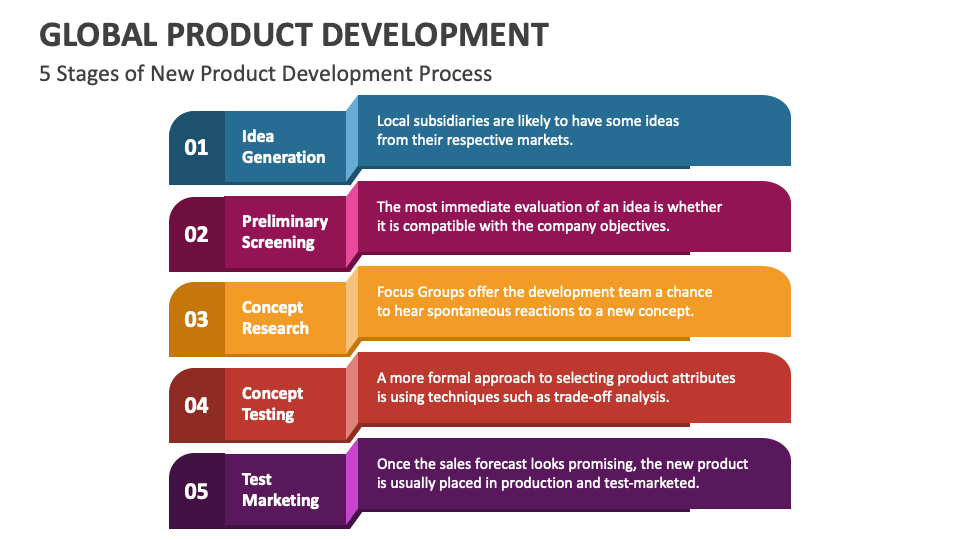In today's interconnected world, companies are no longer confined to the local markets. The rise of digital connectivity has opened up opportunities for companies to reach customers from every corner of the globe. As product designers and manufacturers seek to access these vast markets, grasping the benefits of global product design and manufacturing becomes essential. This shift not only expands market reach but also boosts innovation by incorporating diverse perspectives and ideas.
Scaling your product design process to a global level can lead to substantial advantages. It enables companies to utilize unique materials, technologies, and skilled labor from various regions, ultimately improving product quality and lowering costs. Furthermore, engaging with international markets can foster a deeper understanding of consumer needs, leading to better tailored and successful products. As we explore the journey from local to global, we will discover the vital strategies and considerations that can help your business thrive in the competitive landscape of global product manufacturing.
Understanding Global Economic Patterns
Recently, organizations have increasingly realized the significance of comprehending international market patterns to remain competitive. As technology keeps to evolve, the need for items that cater to varied customer needs expands. This transition creates a unique chance for companies to broaden their scope beyond regional markets and tap into the vast potential of overseas consumers. A thorough study of international trends can help businesses uncover new opportunities, consumer tastes, and budding markets that can greatly influence product development and manufacturing.
One significant pattern is the growth of eco-friendliness and responsible consumption. Consumers worldwide are becoming more conscious of the environmental and social impact of the products they buy. This transformation in beliefs requires businesses to evaluate their development strategies and consider sustainable practices in materials sourcing, production methods, and logistics. By embracing a international perspective, companies can develop goods that not only satisfy the practical needs of customers but also align with their beliefs, boosting customer loyalty and confidence.
Another major pattern is the growing influence of tech innovations. The arrival of digital tools, AI, and automation has revolutionized the way products are created and produced. Companies that leverage these tech advancements can improve their operations, cut expenses, and improve item standard. Comprehending manufacturers outside of china in technology enables businesses to adopt forward-thinking solutions that can drive productivity and quicken time-to-market, providing them a market advantage in the current fast-paced economy.

Adapting Design for Diverse Markets
To prosper in a global marketplace, product design must harmonize with local cultures and attitudes. This entails not only understanding the aesthetic tastes of different regions but also factoring in practical elements such as linguistics, usability, and regulatory standards. By engaging with local designers and consumers, companies can gather insights that influence design choices, making products more desirable and relevant in multiple contexts.
Moreover, adaptive design facilitates modifications that meet distinct regional needs without sacrificing brand image. For example, a tech gadget designed for a Western audience may include features that cater to consumers in Asian markets, such as dual SIM capabilities or specific apps favored by local users. This adaptability helps maintain market edge while fostering a stronger bond with target audiences across regions.
Finally, leveraging technology can streamline the adaptation process. Utilizing data analytics and customer feedback helps identify preferences and shifts in real-time, allowing for quicker iterations and updates to design. This agile approach not only enhances customer satisfaction but also reduces the uncertainty associated with launching products in new markets, ultimately leading to more profitable global product production initiatives.
Issues in Global Manufacturing and Solutions
Worldwide production presents numerous challenges that can impact productivity and product quality. One notable barrier is collaboration across varied teams, often hindered by language barriers and time zone differences. This can lead to misunderstandings of design requirements and deadlines, slowing down the development process. To address these issues, utilizing online teamwork tools that facilitate instant communication and using uniform documentation in a single language can enhance clarity and streamline processes.
Supply chain complexity is another important challenge in worldwide production. Acquiring materials from various regions can lead to logistical challenges, setbacks, and increased expenses. Furthermore, geopolitical factors and trade policies can affect the availability of parts. To reduce these risks, companies should diversify their supplier base and establish solid relationships with numerous partners. Utilizing advanced supply chain management software can also help in tracking and enhancing stock levels and shipments.
Lastly, ensuring compliance with different regulatory standards across nations can be overwhelming. Each market may have distinct laws regarding product safety, environmental regulations, and labor laws, which can complicate the design of products and production processes. To navigate this landscape, organizations should engage local professionals or collaborate with experts who are knowledgeable about local laws. Regular audits and compliance reviews can also be crucial in maintaining adherence to relevant regulations, thus reducing the risk of costly penalties or recalls.
